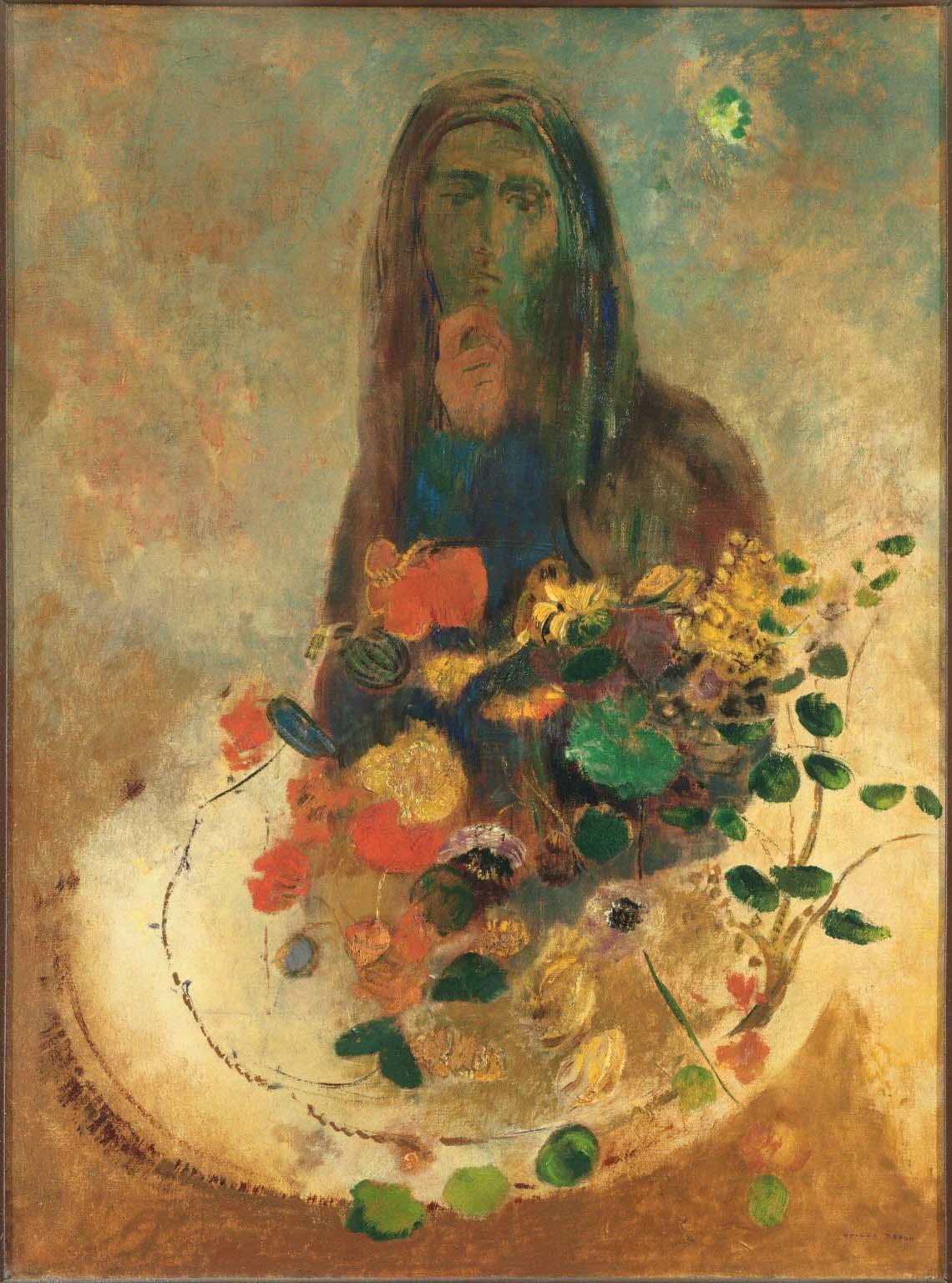Mystery
Odilon Redon ( c. 1910 )

Odilon Redon’s evocative, visionary, and sometimes nightmarish images offer little indication that he was a contemporary of the impressionist painters. Finding the visual objectivity of the impressionists unchallenging and limiting, he preferred to emphasize the unseen, subconscious elements of existence. Accordingly, the symbolist and Nabis painters, who found Redon’s mystical interpretations of the essence of life appealing, eventually adopted him as their mentor during the 1890s. Pierre Bonnard wrote of his admiration for Redon’s “blending of two almost opposite features: a very pure plastic substance and a very mysterious expression.”
Mystery was probably painted around 1910, during the last phase of Redon’s career, when he had abandoned the velvety blacks of his earlier creations and was working predominantly in color in order to produce more tranquil images. The intangible meaning of the painting lends itself to various interpretations, making the title especially appropriate. As Redon wrote in 1902: “The meaning of mystery is to be always in ambiguity… (to have) forms which will be, or which become according to the state of mind of the beholder.”